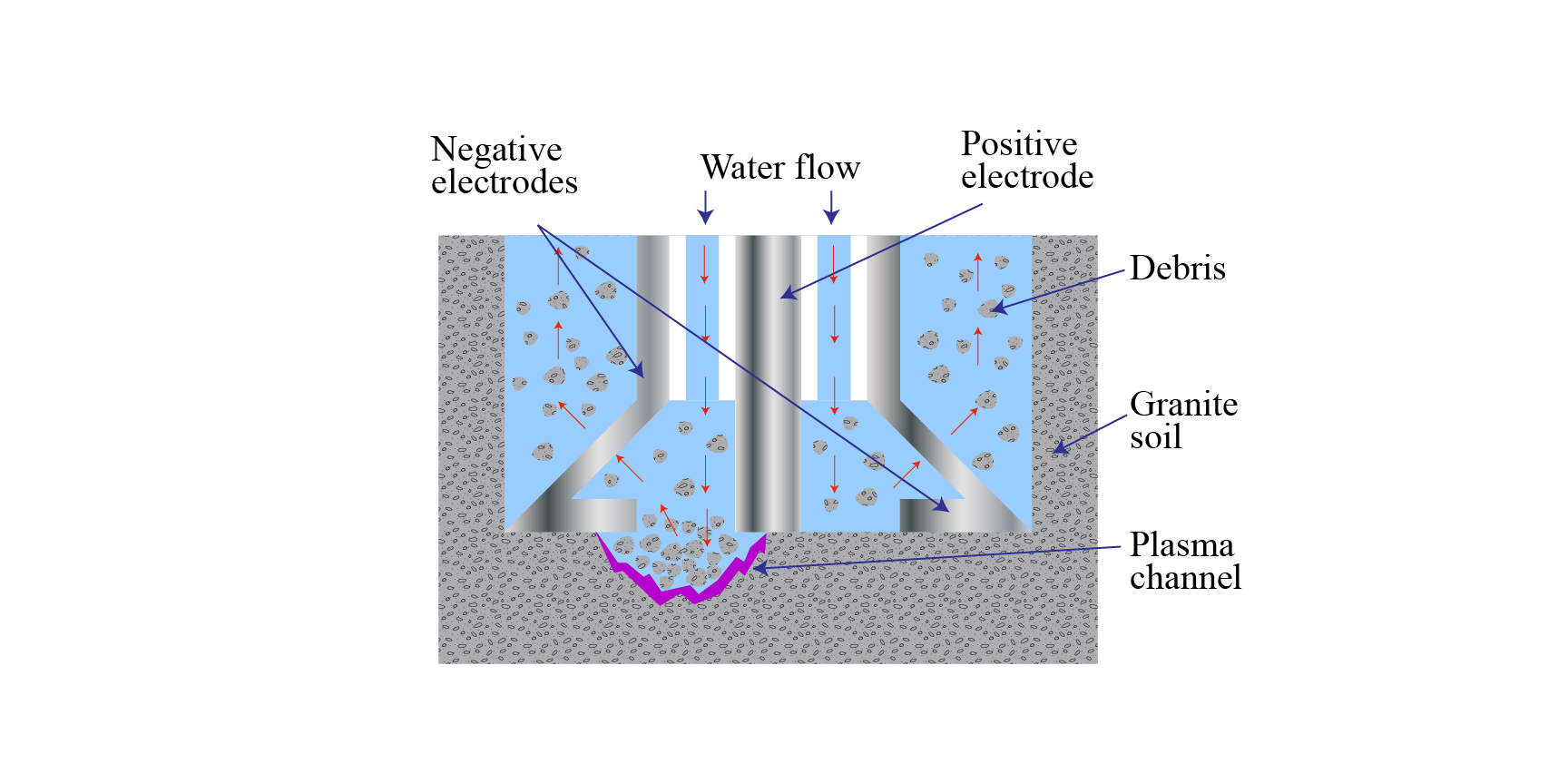High Voltage Pulsed Power Generators for Geo Drilling
Geothermal energy is a globally accessible and renewable energy source that originates from the earth's core. It can be effectively harnessed from depths of 6 to 10 km beneath the earth's surface. Nonetheless, extracting geothermal energy is a challenging process involving drilling hard rocks like granite, quartz, and sandstone. Conventional drilling techniques utilising rotary machines are often susceptible to equipment wear and tear due to friction with the rock during the drilling process. Replacing drill bits at great depths is arduous and time-consuming, thus increasing costs.

The issue of equipment replacement during drilling is reduced by using Plasma Pulse Geo Drilling (PPGD). This method is based on applying a high voltage pulse to a pair of electrodes which is in contact with the rock to be drilled. A plasma channel is ignited between the electrodes that is passing through the rock and causing it to break due to the expansion of the plasma. As there is basically no friction involved in this method, the use of a drill bit is unnecessary, resulting in a continuous drilling process without interruptions for equipment replacement in best case. Therefore, PPGD technology can decrease total drilling costs, making geothermal energy more economically appealing than other non-renewable energy sources.
The project at HPE aims to develop high voltage pulsed power generators for PPGD, offering an alternative to traditional mechanical drilling in geothermal energy exploitation. Designing the pulsed power generator involves addressing various engineering challenges, such as ensuring compactness, robustness, and the ability to operate under high temperatures and pressures. To meet these requirements, the topologies of pulsed power generators are under analysis. The cable generator stores energy in the self-capacitance of high voltage coaxial cables and, in a subsequent step, discharges the energy onto the rock to initiate plasma formation. The second topology, the Marx generator, generates pulses by charging capacitors in parallel and discharging them in series to create a high voltage pulse. In a next step of the project, the optimised solution is built to validate the simulation results.